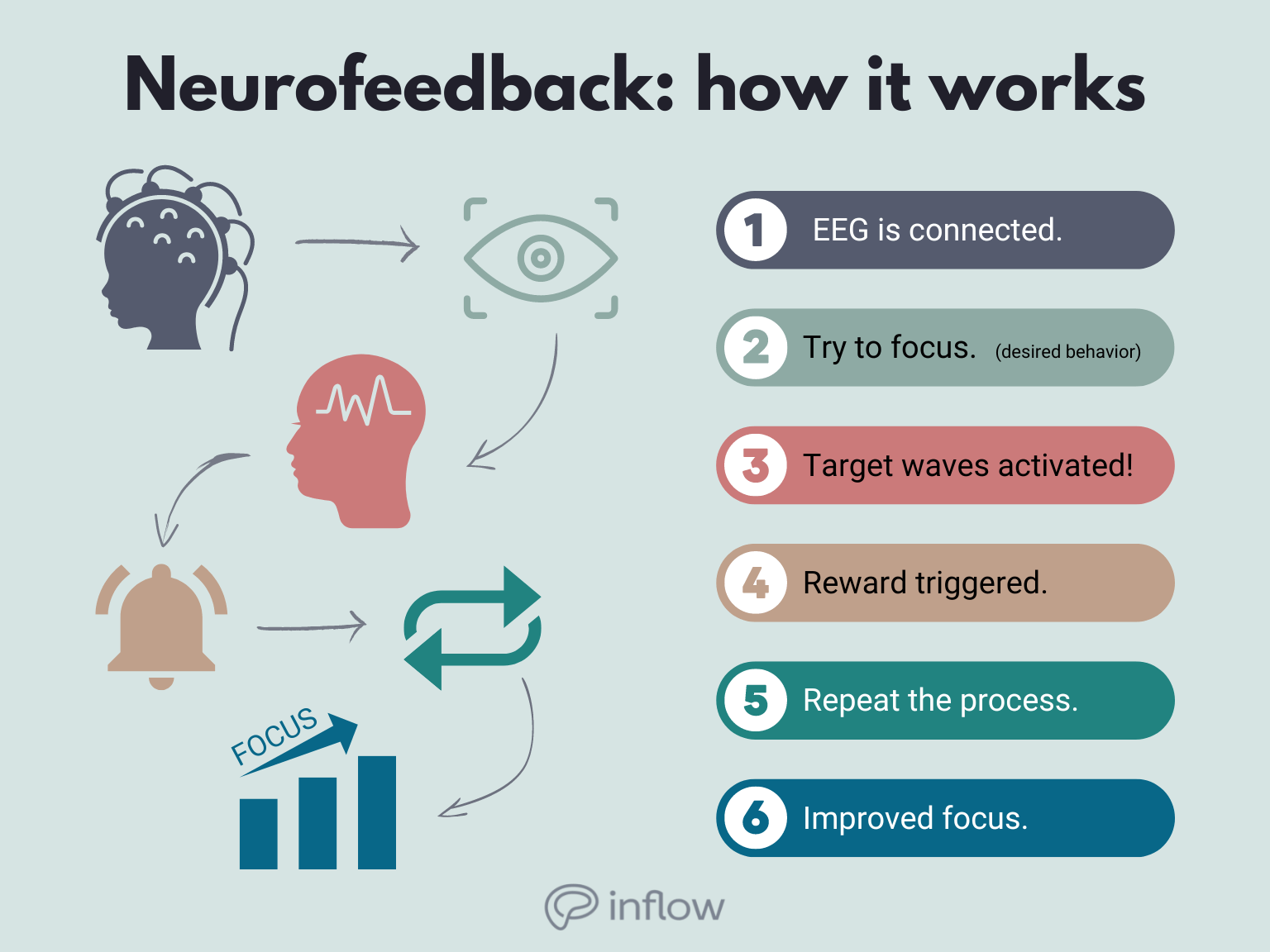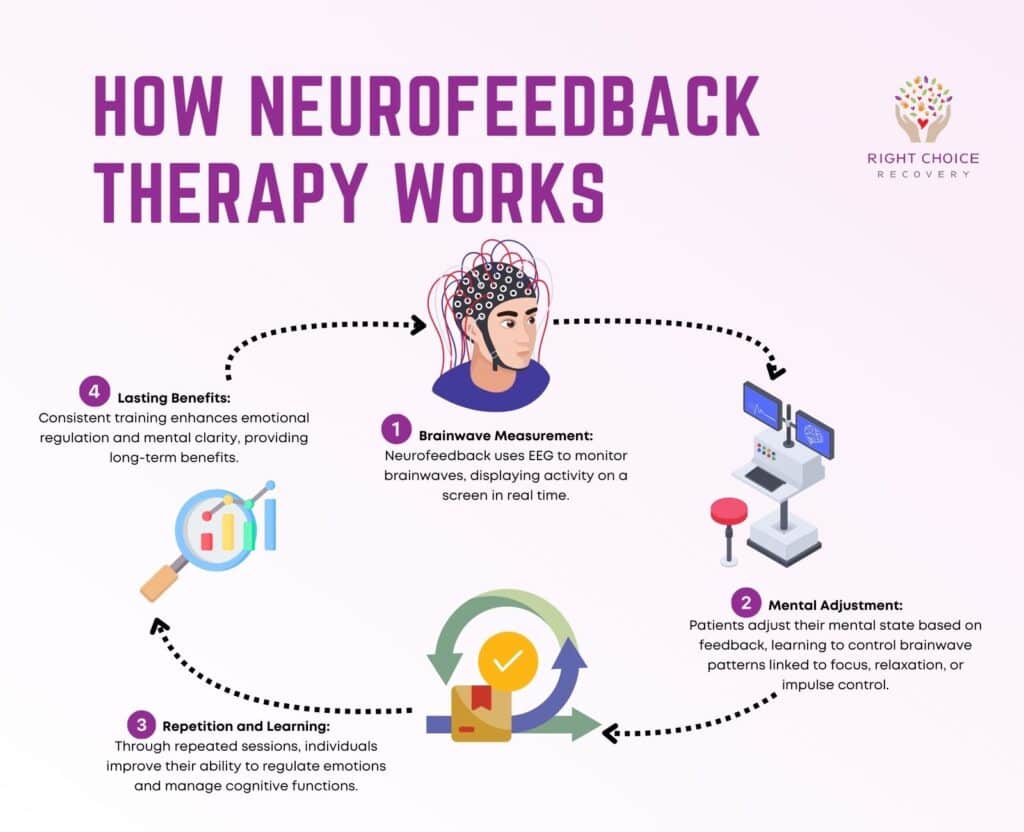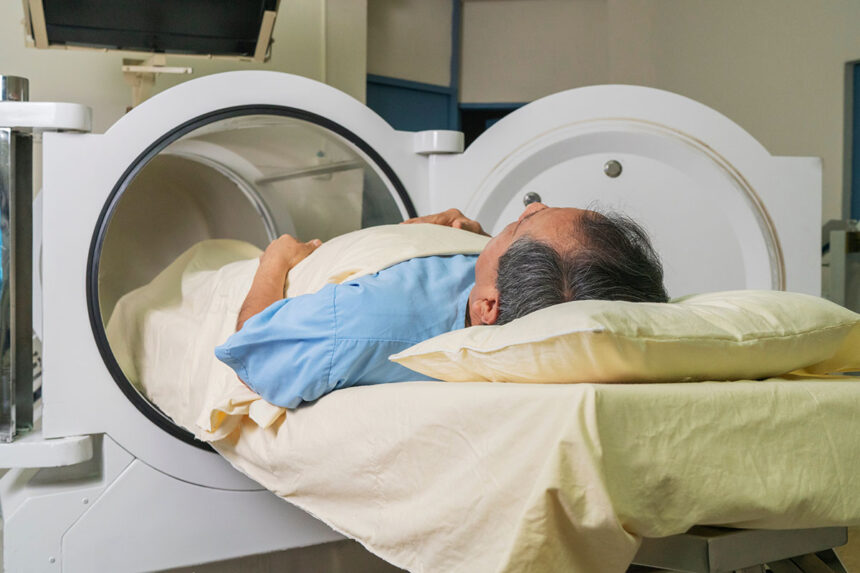The human brain is a complex, dynamic organ that constantly adapts and reorganizes itself based on experiences and stimuli. Neurofeedback training harnesses this ability—known as neuroplasticity—to train the brain to regulate its own activity, leading to improved focus, reduced anxiety, and enhanced cognitive performance.
By monitoring brainwave activity in real time, neurofeedback provides individuals with immediate feedback, helping them recognize and modify unhealthy brain patterns. The approach has gained popularity among professionals, athletes, and individuals seeking better mental clarity and emotional stability.
The brain is capable of learning to regulate itself, and neurofeedback is the key to unlocking that potential.
Dr. Enriquez-Geppert
A study published in Neuroscience & Biobehavioral Reviews (Enriquez-Geppert et al., 2014) highlights the effectiveness of neurofeedback in treating ADHD, reducing stress, and improving executive function.
This article explores the science, benefits, and practical application of neurofeedback training, as well as how you can integrate it into your daily routine for optimal brain performance.
What Is Neurofeedback Training?
Neurofeedback, also known as EEG biofeedback, is a non-invasive technique that monitors brainwave activity in real time and provides feedback to help self-regulate brain function.

How It Works
1️⃣ Electrodes or sensors are placed on the scalp to detect brainwave patterns.
2️⃣ The data is displayed on a computer screen or neurofeedback device in real time.
3️⃣ Visual or auditory feedback guides the brain to correct irregular activity.
4️⃣ Over multiple sessions, the brain learns to self-regulate and optimize function.
📖 Read more: Neurofeedback Mechanisms
The Science Behind Neurofeedback: How Brainwaves Influence Behavior
Our brains operate using different types of brainwaves, each associated with specific mental states:

🔹 Delta Waves (0.5 – 4 Hz) – Linked to deep sleep and unconscious processes.
🔹 Theta Waves (4 – 8 Hz) – Associated with creativity, deep relaxation, and daydreaming.
🔹 Alpha Waves (8 – 12 Hz) – Promote calmness, learning, and mental coordination.
🔹 Beta Waves (12 – 30 Hz) – Essential for focus, problem-solving, and active thinking.
🔹 Gamma Waves (30 – 100 Hz) – Linked to peak cognitive performance and heightened awareness.
Dysregulated brainwave activity can lead to issues such as anxiety, ADHD, depression, and cognitive decline. Neurofeedback helps restore balance by strengthening desired brainwave patterns.
📖 Explore the findings: Brainwaves and Cognitive Function
Key Benefits of Neurofeedback Training
1. Improves Focus and Attention 🎯
Neurofeedback is widely used for enhancing attention and concentration, particularly in individuals with ADHD. Studies show that:
✅ Increasing beta waves improves sustained focus and mental clarity.
✅ Reducing theta waves minimizes distractions and daydreaming.
✅ Strengthening alpha waves enhances learning and information retention.
📖 Read more: Neurofeedback and ADHD
2. Reduces Anxiety and Stress 😌
Neurofeedback helps regulate the amygdala and prefrontal cortex, reducing symptoms of stress, panic attacks, and generalized anxiety disorder (GAD). Research indicates that:
✅ Increasing alpha waves induces relaxation and emotional stability.
✅ Training theta waves promotes deep calm and meditation-like states.
✅ Lowering excessive beta activity prevents overthinking and nervous energy.
📖 Discover more: Neurofeedback for Anxiety
3. Enhances Cognitive Performance and Memory 🧠
Peak cognitive performance relies on efficient brainwave coordination. Neurofeedback optimizes mental function by:
✅ Strengthening gamma waves for higher-order thinking and creativity.
✅ Improving working memory and information processing speed.
✅ Enhancing neuroplasticity, leading to long-term cognitive resilience.
📖 Read the full article: Neurofeedback and Cognitive Enhancement
Neurofeedback allows us to reshape brain function, improving focus, reducing stress, and enhancing cognitive resilience.
Dr. Thomas F. Collura
4. Improves Sleep Quality and Relaxation 😴
Disruptions in theta and delta waves can lead to insomnia and poor sleep quality. Neurofeedback supports better sleep by:
✅ Enhancing slow-wave sleep (SWS) for deep rest and recovery.
✅ Regulating melatonin production, aligning the circadian rhythm.
✅ Reducing nighttime hyperactivity, preventing racing thoughts.
📖 Learn more: Neurofeedback and Sleep Optimization
How to Practice Neurofeedback Training 📡
Step 1: Choose a Neurofeedback Device
🔹 Muse Headband – Tracks brain activity and provides real-time meditation guidance.
🔹 NeuroSky MindWave – A beginner-friendly EEG headset for focus and relaxation training.
🔹 Versus EEG Headset – Used by athletes and professionals to optimize cognitive performance.
🔹 Emotiv Insight – Offers deeper neurofeedback insights for brain training and emotional regulation.
Each device provides real-time feedback via an app, guiding users through training exercises to enhance focus, reduce stress, and improve mental performance.
📖 Read more: Neurofeedback Devices and Applications

Step 2: Set Up Your Neurofeedback Training Routine 🏋️♂️🧠
1️⃣ Find a quiet space – Minimize distractions for effective training.
2️⃣ Wear the neurofeedback device – Position the sensors correctly.
3️⃣ Follow guided exercises – Use meditation, focus tasks, or interactive neurofeedback games.
4️⃣ Monitor progress – Track improvements in brainwave activity over time.
5️⃣ Stay consistent – Regular practice leads to long-term cognitive and emotional benefits.
📖 Explore neurofeedback techniques: Beginner’s Guide to Neurofeedback
Final Thoughts: Should You Try Neurofeedback Training? 🤔
Recent research confirms that neurofeedback can:
✅ Improve focus and attention, especially for ADHD 🎯
✅ Reduce anxiety and promote emotional balance 😌
✅ Enhance cognitive function, memory, and learning 🧠
✅ Regulate sleep cycles and improve relaxation 😴
The best part? Neurofeedback is non-invasive, drug-free, and backed by science. Whether you’re looking to improve performance, manage stress, or optimize brain health, neurofeedback provides a powerful tool for self-improvement.
⏳ Recent Insights into Neurofeedback Training: Enhancing Brain Function for Focus, Anxiety Reduction, and Cognitive Performance 🧠✨
Neurofeedback training is revolutionizing mental performance, stress management, and cognitive health by enabling individuals to train their brains to self-regulate. Using EEG-based devices and apps, neurofeedback provides real-time feedback on brainwave activity, helping users improve focus, reduce anxiety, and optimize cognitive function.
Recent scientific research has highlighted the effectiveness of neurofeedback in treating ADHD, enhancing emotional regulation, and improving overall brain function.
“Neurofeedback Improves Focus and Cognitive Performance” 🎯🧠
A study published in Neuroscience & Biobehavioral Reviews found that neurofeedback can significantly enhance concentration and mental clarity by:
✅ Strengthening beta waves, improving attention span and problem-solving skills
✅ Reducing theta wave overactivity, minimizing distractibility and daydreaming
✅ Enhancing neuroplasticity, leading to long-term cognitive improvements
These findings confirm that regular neurofeedback training can improve focus and executive function, making it a powerful tool for students, professionals, and individuals with ADHD.
📖 Read more: Neurofeedback and Attention Enhancement
“Brainwave Training Reduces Anxiety and Enhances Emotional Stability” 😌💆♂️
Neurofeedback is now widely used for stress and anxiety management, helping individuals regulate emotional responses by:
✅ Increasing alpha waves, promoting relaxation and mental calmness
✅ Balancing beta and theta waves, reducing overthinking and emotional dysregulation
✅ Improving amygdala-prefrontal cortex connectivity, enhancing emotional resilience
Studies show that neurofeedback training helps individuals manage stress, PTSD, and generalized anxiety disorder (GAD) without medication.
📖 Explore the findings: Neurofeedback for Anxiety and Stress
“Neurofeedback Enhances Memory and Learning Ability” 📚🔬
Brainwave regulation plays a crucial role in memory retention and cognitive flexibility. Neurofeedback training can:
✅ Strengthen gamma wave activity, improving information processing and retention
✅ Enhance working memory and recall speed
✅ Boost overall cognitive resilience, supporting lifelong brain health
📖 Read the full article: Neurofeedback and Cognitive Enhancement
“Neurofeedback Supports Better Sleep and Relaxation” 😴🌙
Sleep disturbances are often linked to brainwave imbalances, which neurofeedback can help correct by:
✅ Increasing delta waves, promoting deep, restorative sleep
✅ Regulating melatonin production, aligning circadian rhythms
✅ Reducing nighttime hyperactivity, preventing racing thoughts and insomnia
📖 Discover more: Neurofeedback and Sleep Optimization
“Real-Time Brain Training Improves Stress Resilience and Mental Well-Being” 🏋️♂️🧘♀️
Neurofeedback enhances mental resilience by training the brain to recover from stress more efficiently. Benefits include:
✅ Enhanced autonomic nervous system balance, improving stress adaptation
✅ Increased vagus nerve activity, promoting emotional stability
✅ Better control over cognitive and emotional responses
📖 Learn more: Neurofeedback for Mental Resilience
Final Thoughts: Should You Try Neurofeedback Training? 🤔
Recent studies confirm that neurofeedback can:
✅ Improve focus and attention, especially for ADHD 🎯
✅ Reduce anxiety and promote emotional balance 😌
✅ Enhance cognitive function, memory, and learning 🧠
✅ Regulate sleep cycles and improve relaxation 😴
✅ Boost mental resilience and stress management 💪
The best part? Neurofeedback is non-invasive, drug-free, and backed by science. Whether you’re looking to improve performance, manage stress, or optimize brain health, neurofeedback provides a powerful tool for self-improvement.
💡 Have you tried neurofeedback? What benefits have you experienced? Let’s discuss in the comments! ⬇️😊























